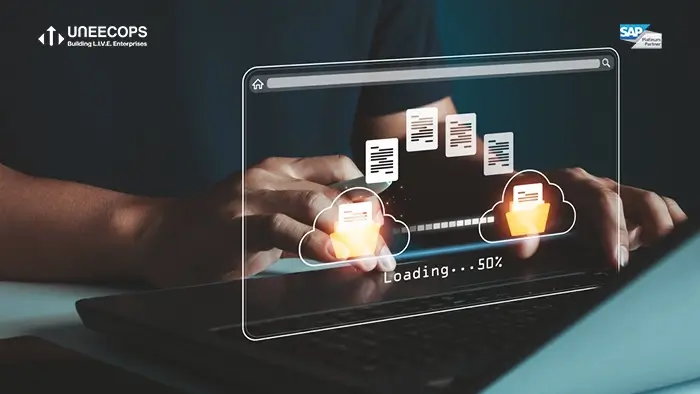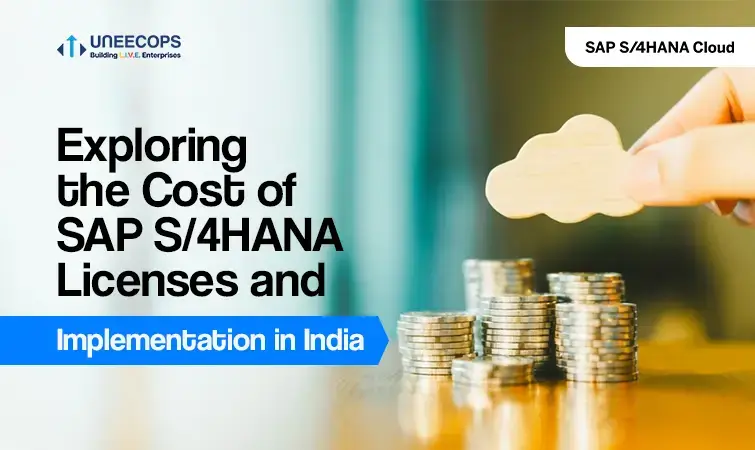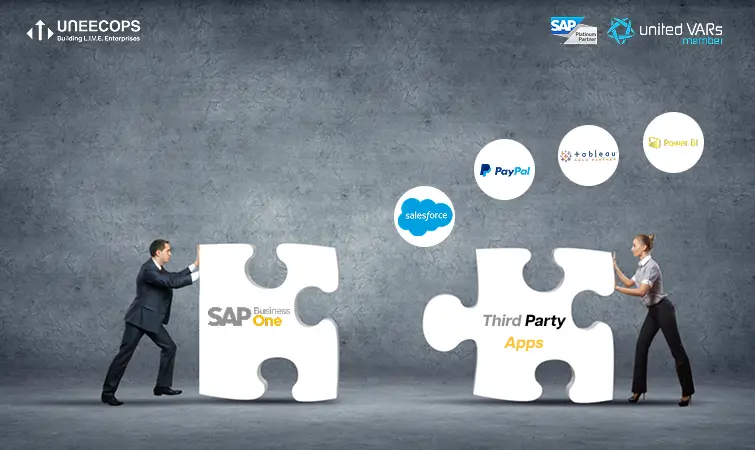With the rise of technological transformation across businesses, SAP S/4HANA once again asserts itself as the saviour being the next generation ERP system for real time analytics, intelligent automation, and business processes integration.
As 2025 nears, businesses across the globe have formulated their plans about this ERP transitioning. In this article, key considerations and recommendations, innovations in SAP S/4HANA 2025, and strategies related with S/4HANA migration have been discussed.
The Need to Transition to SAP S/4HANA in 2025
As a move of their strategy, SAP announced it will discontinue support of its older systems such as SAP ECC which has left no choice for many organizations but to move to SAP S/4HANA. Such migrations not only help in staying compliant but help to recreate the operating model. In the era of commoditized infrastructure this step served a purpose of unlocking agility and features required for the organization to remain relevant in the market.
How Does SAP S/4HANA Work?
SAP S/4HANA serves their customers with the following features and their increasing value proposition:
- Rapid Processing of Data: Leveraging on in memory computing for faster decision making.
- AI and ML Capabilities: Automating complex operational aspects and predicting them.
- Improved User Interfaces: Complex processes made simpler with Fiori apps and intelligent interfaces.
- High Availability: Ease in adaptability to new paradigms of operating models and newer technological advancements.
Key Innovations in SAP S/4HANA in 2025
The SAP S/4HANA has changed dramatically and has incorporated many innovations aimed at optimizing modern enterprises. These improvements will further strengthen its reputation as an ERP of the future in the year 2025 because:
- Through integrated AI and predictive analytics, it provides better forecasting and insights to decision makers.
- Through a hybrid and multi-cloud approach, seamless data integration is provided through cloud-first capabilities.
- These are tools that enable one to track carbon footprints and resource utilization in line with the ESG goals.
- Here we can talk about having different solutions for retail, manufacturing, health care and many others.
- They help in the automation of tedious chores which helps to re-allocate resources directed towards core activities.
As it stands now, SAP S/4HANA 2025, owing to these advancements, is the most viable option for organizations in pursuit for agility and innovation.
Formulating a Sound S/4HANA Implementation Plan
Considering the potential risks and effectively minimizing them while ensuring a smooth transition makes the S/4HANA implementation strategy vital in forming a rigorous SAP S/4HANA migration. The following are the steps to take:
- Develop a S/4HANA migration roadmap and determine how you are going to replace the existing infrastructure.
Focus on the objectives of each task while performing them.
- Are you planning on standardizing business processes?
- Are new technologies going to be a part of the architecture enhancement?
- Can the migration contribute to fulfilling regulatory requirements?
The priorities set at the beginning will assist in decision-making through the migration’s journey.
- Evaluate Deployment Models
Is it a cloud, local or hybrid model that would be best for the organization? A large number of organizations have started shifting to the cloud model as they are easier to deploy and are much more elastic.
- Conduct a System Readiness Assessment
Take stock of the existing Information Technology systems, such as:
- Ability to function in conjunction with SAP S/4HANA.
- Certain customizations and integrations that might require reconfiguration.
- The volume and quality of data as this will determine how complex the migration would be.
- Leverage SAP’s Tools and Expertise
If readiness checks are joined with transformation navigators depending on the level of change, such determinants can lead to drastic changes in the planning of a migration. Also, referring to certified SAP partners guarantees certain level of professionalism.
- Adopt a Phased Approach
Strategies for the migration to cloud-based ERP have to be done in steps:
- Greenfield Approach: Building a new SAP S/4HANA environment tends to favour organizations looking to change their systems entirely means starting afresh.
- Brownfield Approach: This enables businesses to upgrade their current ERP systems that have historical data with certain processes.
- Selective Data Transition: This mixing of greenfield and brownfield strategy means a partial approach is being undertaken.
- Plan Change Management as the Core Function
It’s not only about technology when it comes to successful migration, it also calls for employee engagement and acceptance. As a measure, include training courses and proper information flow to assist teams with the shift.
Pointers for Executing Migration to S/4HANA Successfully
- Data Management
Data migration represents one of the focal points in the S/4HANA migration. To enhance the quality of data, consider the following:
- Cleaning and purging files of duplicated entries
- Migrating obsolete files to tighten the migration process
- As per the requirements of SAP S/4 HANA, optimizing data structures.
- Integration with Legacy Software Solutions
Numerous organizations have a multitude of systems in place for their operations. Ensure that there is proper interfacing in between SAP S/4HANA and any other systems such as CRM resources, manufacturing systems among others.
- Performance Issues
Before the first go live of the new system, adequate tests should be done to confirm if the system meets expectations. During the initial week of the migration, supervise the functioning of the system closely.
- Legal Requirements
Confirm fulfilment of the new system with both industry and data privacy parameters. To reduce the risks of legal issues, integrate compliance steps within your deployment plan.
Maximizing the Potential of the Integrated Suite of Next-Generation ERP Applications
Organizations that successfully migrate to SAP S/4HANA 2025 should expect:
- Re-engineered processes that will eventually cut bottlenecks hence leading to improvement in the overall performance.
- Enhanced customer interactions, using data to offer the most suited products or services.
- Availability, making sure business operations developed stand the test of time.
- Analytics-based strategy, quick business actions in context to changing market dynamics through analytics-driven insights.
All these benefits accentuate why it is important to have an efficient S/4HANA implementation strategy if one hopes to remain competitive in the industry.
Conclusion: The Way Forward towards SAP S/4HANA 2025
The switch to SAP S/4HANA should be seen as an opportunity by the prospects to adopt better ERP systems. Given the proper approach with specific goals and reliability, so to say, everything goes according to plan. In today’s world, there’s no longer a set of instructions regarding making the transition but rather how accurately the change can be made while preserving the company culture. Given that many companies today thrive for customer satisfaction as the primary or sole goal of the action.
Uneecops vision for 2025 is to become a global leader in digital transformation solutions, empowering businesses of all sizes to embrace innovation, achieve operational excellence, and drive sustainable growth.
Make 2025 Your Year of Transformation with SAP S/4HANA with Uneecops Experts!







